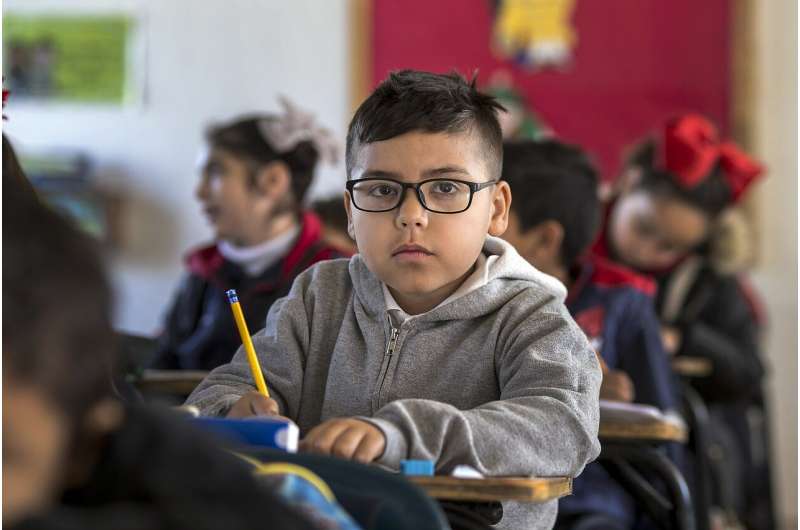Credit: CC0 Public Domain
In primary and secondary school, pupils in the same class might differ substantially in age. Such differences are due to the distance between a student's birthdate and the cutoff date (i.e., the date that determines the academic year or the grade to which the student is assigned). Recent scientific studies have shown that the relatively younger students in class perform more poorly, have fewer friends, and prefer to avoid face-to-face interactions with friends. These students are also more frequently bullied.
A new study in collaboration between researchers from Tulane University, Ghent University, and STATEC Research has investigated data about 380,000 adolescent students between 10 and 17 years of age from 30 European countries, and found that these relatively young students are also characterized by a lower sense of well-being. That is, the youngest students in a class declare a lower life satisfaction and lower general health.
"More in particular, the youngest students in class are more likely to be overweight throughout adolescence. Perhaps this is due to a less frequent engagement in sports, as shown in other studies. The implication is that something as apparently innocuous as age differences between classmates might be contributing to the global epidemic of obesity, that is, 'globesity' [term used by the World Health Organization]," says Luca Fumarco, postdoc fellow at Tulane University.
"What is alarming, is that these effects do not appear to have a transitory nature: gaps in general health remain constant, while life-satisfaction gaps decrease as students get older only in countries where student tracking in different education paths starts at later ages [i.e., 14 years of age or later]. These results suggest that to improve the well-being of the youngest students in a class, policymakers could consider increasing the age when tracking in different education paths starts," says Francesco Sarracino, senior researcher at STATEC Research.
The magnitude of the results is not negligible. "To put the magnitude of these results into perspective, we have shown that the effects of relative age gaps on life-satisfaction and health are comparable in size to the effects of students' household socio-economic status. In other words, being among the youngest students in class or coming from a poor household have similar effects on well-being."
More information: L. Fumarco et al. Younger, dissatisfied, and unhealthy – Relative age in adolescence, Economics & Human Biology (2020). DOI: 10.1016/j.ehb.2020.100858
Provided by Ghent University
























